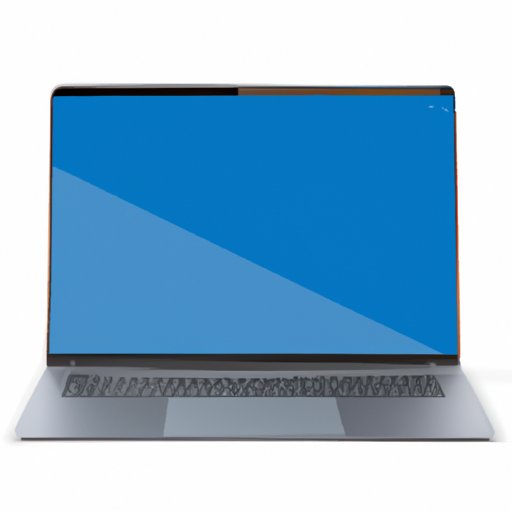Introduction
Have you ever wanted to save an image from your screen to use later, or capture important information before it disappears? That’s where taking a screenshot comes in handy. A screenshot is simply a picture of whatever is on your laptop’s screen at the moment. In this comprehensive guide, we will discuss how to take a screenshot on a laptop, using the different operating systems: Windows, Mac, and Chromebook. This article will cover keyboard shortcuts, third-party software, and how to use the laptop’s built-in utility to capture, edit and save screenshots.
Step-by-step guide
Windows users
Windows has several ways to capture a screenshot of your laptop’s screen:
- Print screen key: Pressing the ‘Print Screen’ key captures the entire screen image, which you can then paste into a document or image editor by pressing ‘Ctrl + V.’
- Snipping Tool: Windows features an in-built Snipping Tool, accessible by searching for ‘Snipping Tool’ in the bottom left search box. The Snipping Tool lets you capture a selected area of your screen by dragging your cursor around it. Once you’ve captured the area, you can edit and save it.
- Third-party software: If you want more advanced features like multiple screenshots, image editing, and annotation tools, third-party software like LightShot or Snagit can be downloaded and installed.
Mac users
For Mac users, taking a screenshot is just as easy. Here are some of the ways:
- Keyboard shortcuts:
– Command + Shift + 3: Captures the entire screen and saves it as a file on the desktop.
– Command + Shift + 4: Allows you to select a custom area of the screen to capture. The cursor changes to a crosshair pointer that lets you select the preferred area. The image is then saved to the desktop. - Third-party software: Software such as Gyazo is available for those who want advanced features like annotation tools, file sharing and cloud storage facilities.
Chromebook users
Chromebook users don’t need to download anything extra to capture a screenshot. Here are two ways to do it:
- Keyboard shortcuts:
– Ctrl + Window Switcher key: captures the entire screen.
– Ctrl + Shift + Window Switcher key: captures a selected area. - Nimbus Screenshot: This app can be added to Chrome. It offers the ability to annotate, capture and share screenshots. It’s also possible to record video from your screen.
Keyboard shortcuts
Keyboard shortcuts are an essential tool that saves time and makes taking screenshots more efficient. Here are the most common ones for all three operating systems:
- Windows: Print Screen key, Windows Key + Print Screen key, Alt + Print Screen key, and Windows + Shift + S.
- Mac: Command + Shift + 3 and Command + Shift + 4.
- Chromebook: Ctrl + Window Switcher key and Ctrl + Shift + Window Switcher key
Screenshot tools
Third-party software adds value to the screen capture process. Here are three unique options:
- LightShot: This software has a feature that allows you to select a specific area of the screen by dragging your mouse. It also has a color picker.
- Gyazo: This software has a quick upload feature that lets you share the capture with your friends or post on social media platforms.
- Snagit: Snagit has various capture modes on images, videos, or web pages. Advanced editing features like text bubbles, arrows, and blurring are also available.
Windows Snipping Tool
The Windows Snipping Tool is a utility built into Windows for taking a screenshot and then annotating or editing it before saving it to your computer’s storage.
- Open the Snipping Tool: Type ‘Snipping Tool’ in the search bar, or find it in the Start menu under Windows Accessories.
- Choose a snip type: You can choose several options, such as free-form, rectangular, window, and full-screen snips.
- Select the screen area: After choosing the snip type, you can select the area of the screen to capture.
- Edit the screenshot: Once you have created the screenshot, the Snipping Tool has a built-in editing feature that lets you add text, highlight points, and remove unwanted parts of the screenshot.
- Save the screenshot: Finally, you can save the edited screenshot to your computer by clicking the ‘Save’ button and choosing a storage location.
Editing and saving
After capturing the screenshot, you may need to edit and save it to a suitable file format. Here’s a quick guide to doing that:
- Editing: You can use .JPG to edit the screenshot by opening it with MS Paint or more advanced software like GIMP or Paint.NET.
- Saving: You can save it to various file formats, including JPEG, PNG, BMP, and GIF. To do this, click ‘Save As’ and select the file format. Choose where you want to save the file and click ‘Save.’
Troubleshooting
Here are some common issues encountered when taking a screenshot, along with their solutions:
- Low resolution: If the image resolution is too low, try using a larger snipping type or increasing the screen resolution. You can also edit the image to increase its size.
- Black screen: Sometimes, the snipping tool may capture a black screen. The solution is to update the VGA driver from the laptop manufacturer’s website.
- Failed to capture: This issue is usually caused by third-party software, so uninstall it and try again.
Conclusion
Taking a screenshot is a simple but essential skill that can drastically improve your workflow and productivity. With this guide, you should now be able to confidently take a screenshot using various methods available to Windows, Mac, and Chromebook users. Don’t forget to experiment with third-party software and edit your images to suit your preferences. Start taking screenshots regularly, and you’ll be able to capture valuable information and store memorable moments for future reference.
